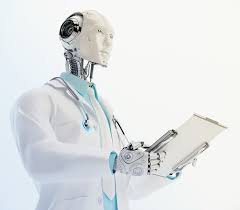Source: machinedesign.com
Even early concerns related to artificial intelligence (AI) have not appeared to slow its adoption. Some companies are already seeing benefit and experts are saying companies not adopting new technology will not be able to compete over time. However, AI adoption seems to be moving slowly despite early successful case studies.
Why AI is Moving so Slow in Manufacturing?
AI is growing, but exact numbers can be difficult to obtain, as the definition of technologies such as machine learning, AI, machine vision, and others are often blurred. For example, using a robotic arm and camera to inspect parts might be advertised as a machine learning or an AI device. While the device could work well, it might only be comparing images taken to others that were manually added it to a library. Some would argue this is not a machine learning device as it is making a preprogrammed decision, not one “learned” from the machine’s experience.
According to a Global Market Insights report publish in February this year, the marketsize for AI in manufacturing is estimated to have surpassed $1 billion in 2018, and is anticipated to grow at a CAGR of more than 40% from 2019 to 2025. But other resources insist that AI is moving slower. Some resources are often comparing AI case studies to the entire size of the manufacturing market, talking about individual companies investments, or specifically AI on a mass scale. From this prospective, AI growth is slower, and that is for a few reasons other than the aforementioned.
AI is still a new technology. Much of the success has been in the form of testbeds, not full-scale projects. This is because in large companies, one small adjustment could affect billions of dollars, so managers don’t want to test full-scale projects until they’’ve found the best solution. Additionally, companies of any size need to justify or guarantee a return on investment (ROI). This leads to smaller projects, a focus on low-hanging fruit, or projects that can be isolated as a testbed.
While the current investment wave of AI is at an all-time high, high-level adoption remains low. A research paper from the McKinsey Global Institute in 2017, “Artificial Intelligence, The Next Digital Frontier?”, reported high investment into AI. Early adopters of AI have common characteristics: digital maturity, larger business models, the adoption AI into core activities, the adoption of multiple technologies, a focus on growth over savings, and C-level support for AI. This diagram highlights areas where money has been invested into AI R&D. (Courtesy: McKinsey Global Institute)
Smaller or isolated projects might work well as a test, but theoretically, AI should return greater benefits when operating at larger scales. This generally requires more connectivity and data to maintain accuracy. This is the next reason why AI might be moving slowly: Scale and connectivity.
Many companies have legacy equipment that does not provide data or a way to send data to another location. New technology is working on retrofitting legacy equipment, but then design engineers may have infrastructure problems. For example, some factories might lack easy access to power for smart sensors or an IT network to get the data where it can offer greater benefit.
While AI is growing and by all resources will continue to, maturity, confidence, ROI, scaling, and connectivity might be slowing mass adoption.
What can AI do for Manufacturing and Design
This section may be the most difficult, as it relates to the blurred lines and buzzwords previously mentioned. Designers and manufacturing have used CAD tools, machine vision, and predictive maintenance before. AI technology is advancing these technologies to new heights, but individual devices might be debated to where it is on the AI spectrum.
AI CAD Tools
Design engineers have specifications they have to achieve when developing new parts and devices. To do this it is important to understand a plethora of information from materials and processing, to the applications and needs of the end-user. With theoretical data CAD programs have tools like finite element analysis (FEA), and the design engineer must add the data manually or select it from a library.
One new tool in CAD technology uses AI to create a generative design. This takes the specifications and inputs needed for a design and generates all possible materials, geometries, and even costs. While new features are user-friendly, the technology is only as good as the user.
Not only do you need the knowledge of what should be added to the specification and inputs, but the user still needs to review the possibilities to select the best solution. This type of AI CAD technology helps amplify design engineers’ abilities and saves time because the design engineer doesn’t have to manually design multiple iterations.
This multi-material gripper was automatically designed using topology optimization. A user specifies desired grip direction and the applied forces. The shape of the part and the layout of the materials (rigid and elastic) are computed automatically to obtain a digital representation that can be directly 3D printed. Click here for more details.
Currently, generative design will most likely produce a part that isn’t easy to manufacture using traditional processes. It can work well for 3D printing or additive processes. Companies are working on adding variables to the software to consider traditional, or subtractive processes, which should open AI CAD design technology to the masses.
Digital Twins
Moving forward, AI technology is building increasingly accurate models using these CAD and AI tools to include theoretical and real-world data. This combination of data is building accurate digital twins. Having a digital model lets engineers accurately predict wear, movement, and interactions with other devices.
AI technology in digital twins give engineers the ability to see and test parts, entire machines, production lines, and more, all digitally. With today’s ability to rent cloud computing power, both large and small companies can afford to use AI CAD technology to find bottlenecks, limitations, mistakes, or better features to accelerate time to market. Having a mass of data and mapping interactions of materials, machines, and processes lets engineers see how everything is connected and interacts. Design engineers will know how changing design specifications would affect the product, production line, supply chain, and maintenance.
Predictive Maintenance
A large concern for manufacturers in downtime. While IoT and connectivity are helping predict and detect problems before they occur, AI technology could keep things running smoother. For example, an engineer looking at a set of operational data of a machine think a vibration change means the cutting tool need to be replaced or sharpened soon.
Preventive maintenance agreements can increase system availability. Connectivity gives the ability for specialist to regularly inspect parts, and as AI programs advance parts can be monitored round the clock. Software can send notifications to engineers or specialists to alert them to changes in operation and suggest maintenance to optimize machine’s uptimes. (Credit: Bosch Rexroth)
It would be difficult for an engineer to know all the information that could be affecting the vibration on a machine. However, an AI system could instantly take data, the machines history, and other parameters to suggest a more informed decision. In this example, perhaps a material or speed change caused the vibration to increase due to resonance or natural frequency of the material. Accuracy is improved by connecting large datasets, processing data quickly to find patterns (or lack of patterns), and using AI to learn from past and present data to deliver more accurate models to help engineers make more informed decisions.
AI Changes Factories and Education
Eventually, connectivity and AI will grow where it will be possible to achieve an N-value where a program could update or improve a design autonomously based on real-world data. Mass adoption of AI technology can lead to mass customization and greatly increase flexibility. This will not only keep companies competitive but might have a ripple effect from industry to training and education.
“We are currently at stage one [of AI adoption] with information on Google taking your data and making suggestions. Stage two will be more disruptive, replacing some traditional training and education,” said Markus J. Buehler, a materials scientist and engineer at the Massachusetts Institute of Technology. “As we move to an AI Nero-network approach…future students will only need to know how to work with the AI programs and the computer will do the physics.”
The speed of technology is moving faster, and it is harder to compete if a company falls behind. Industry doesn’t have time for four-year degrees. Education could shift toward streamlined, employer-focused classes that teach students how to use AI programs. Some experts say this ripple affect is not only inevitable but necessary for a company’s survival. However, legacy equipment, confidence, a focus on ROI, and other factors are slowing AI’s adoption. According to Forbes Insights research, more than half of respondents (56%) in the automotive and manufacturing sectors plan to increase AI spending by less than 10%.


